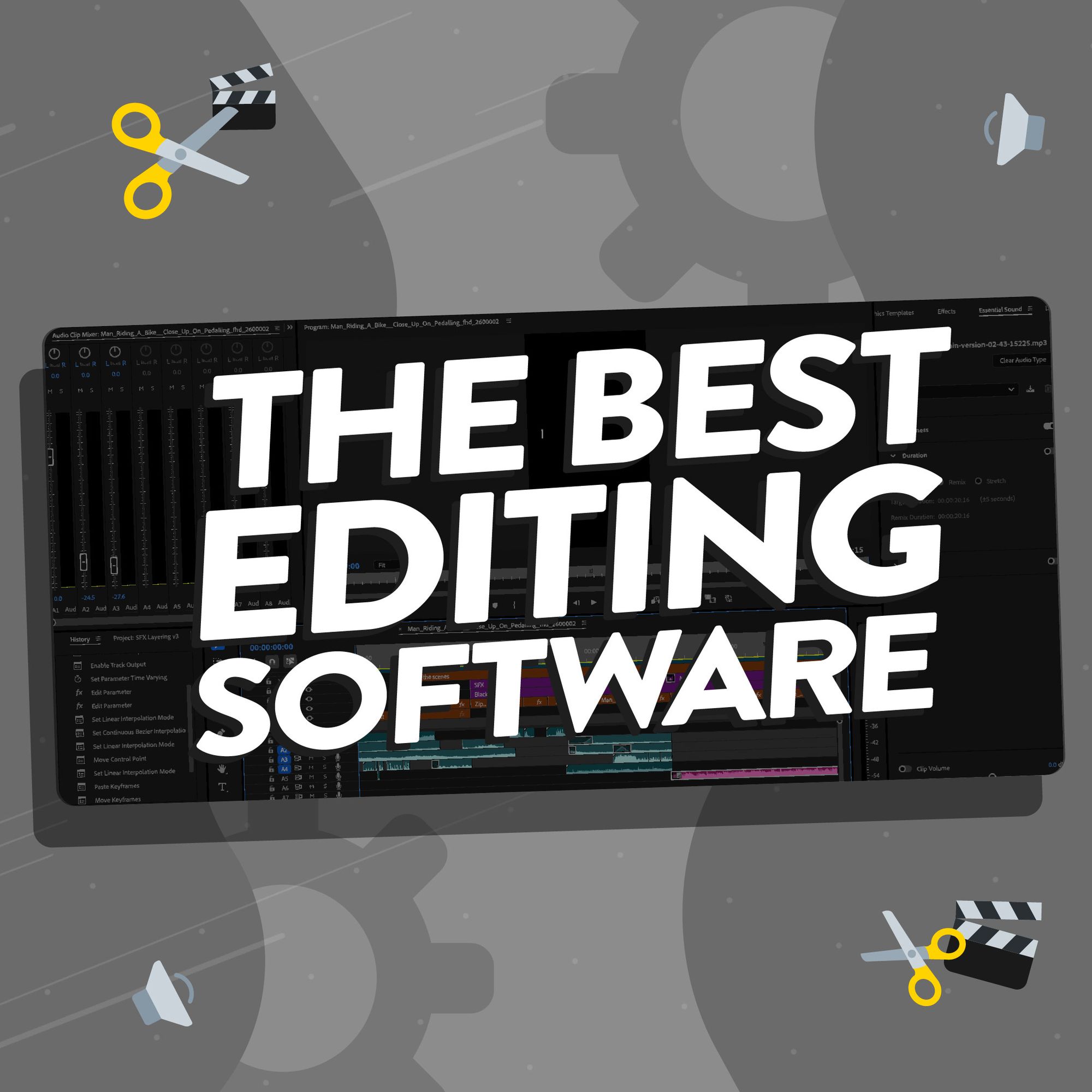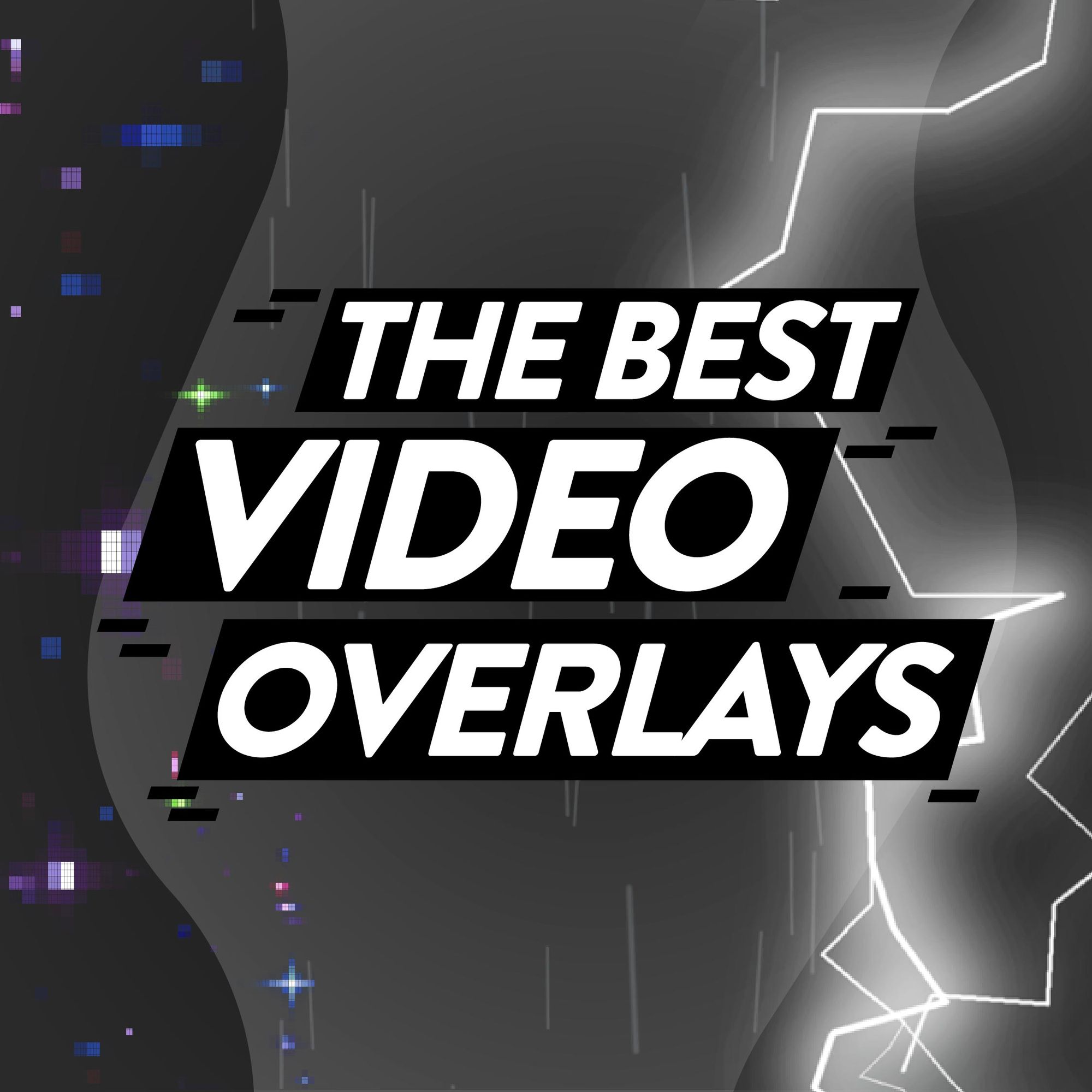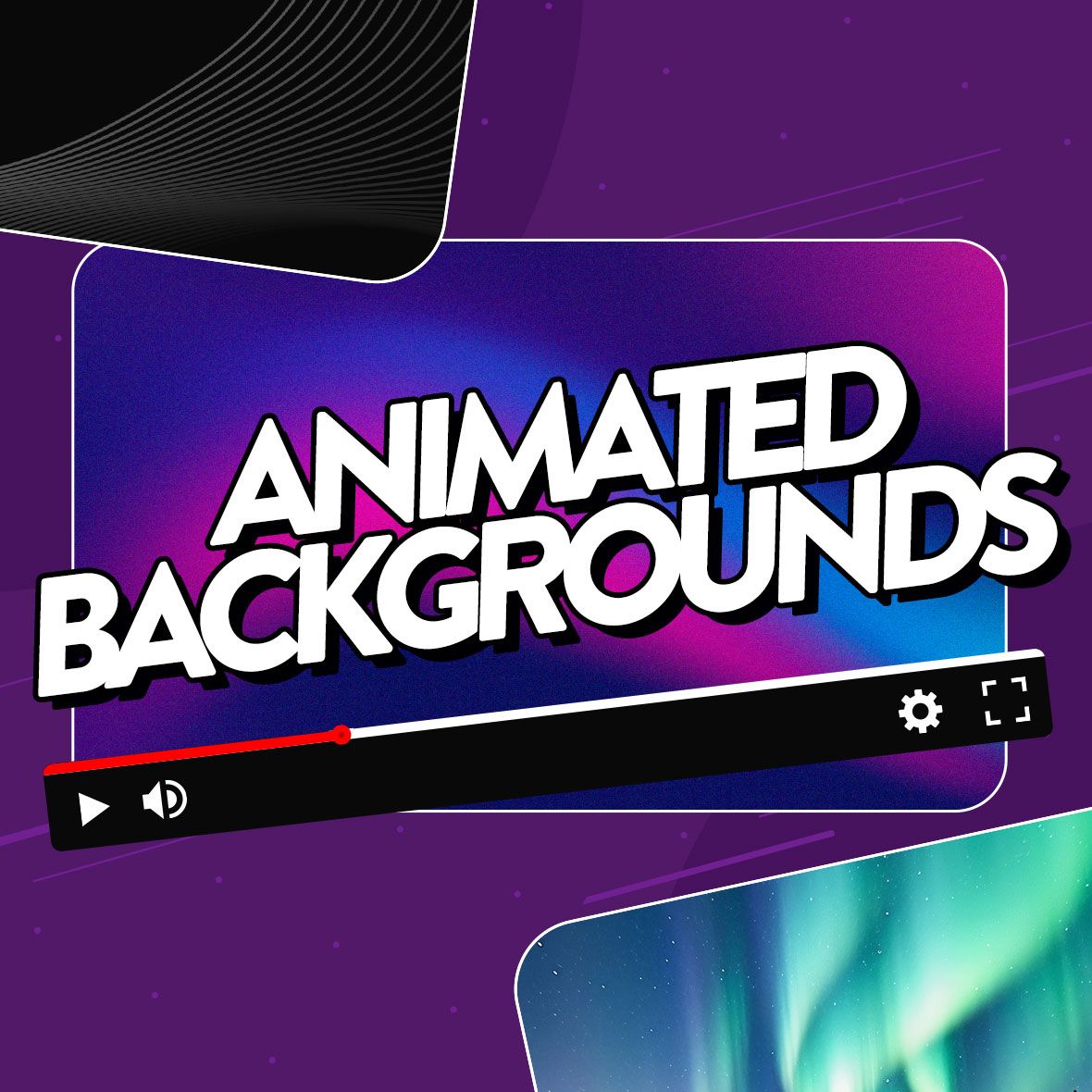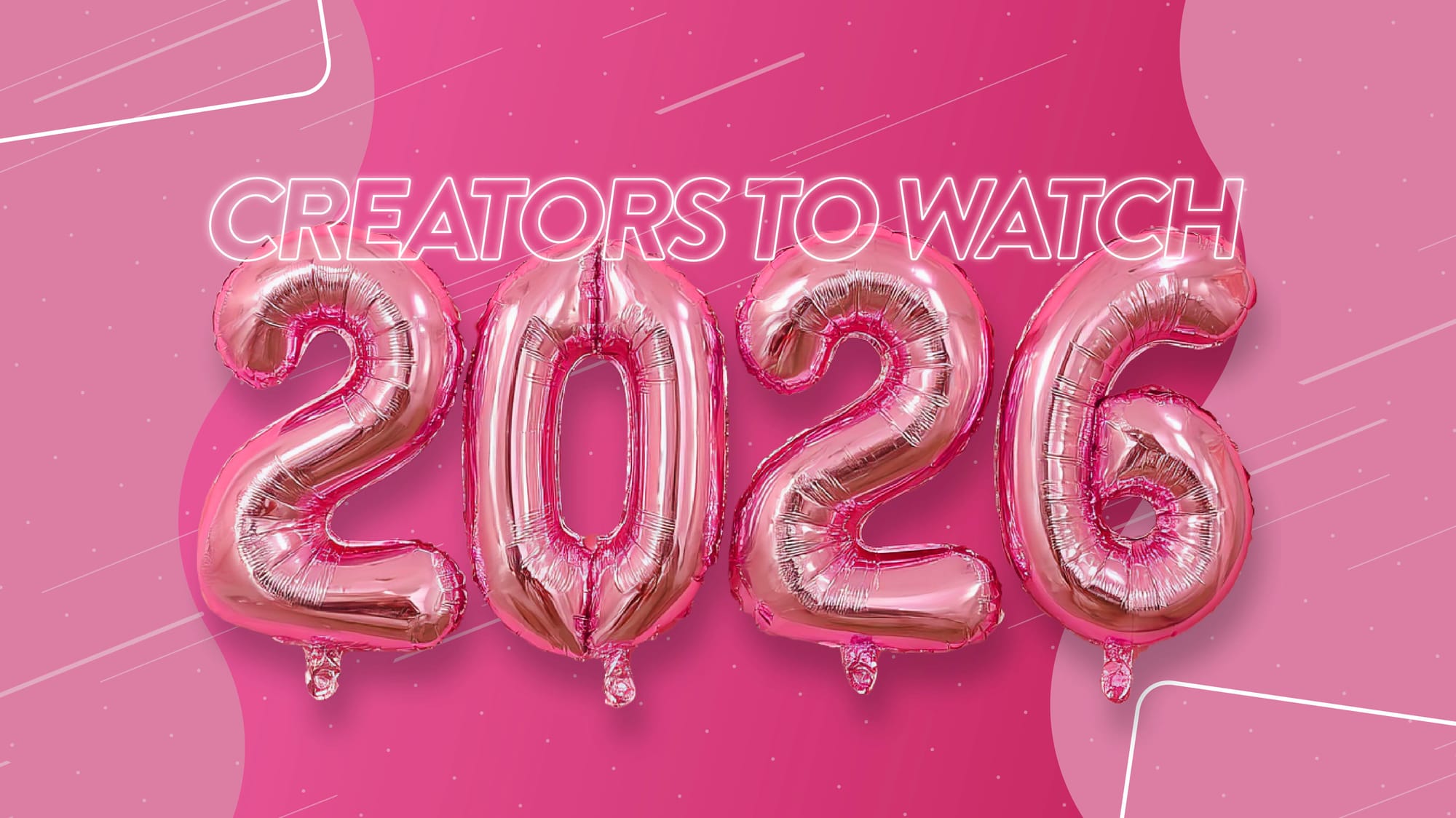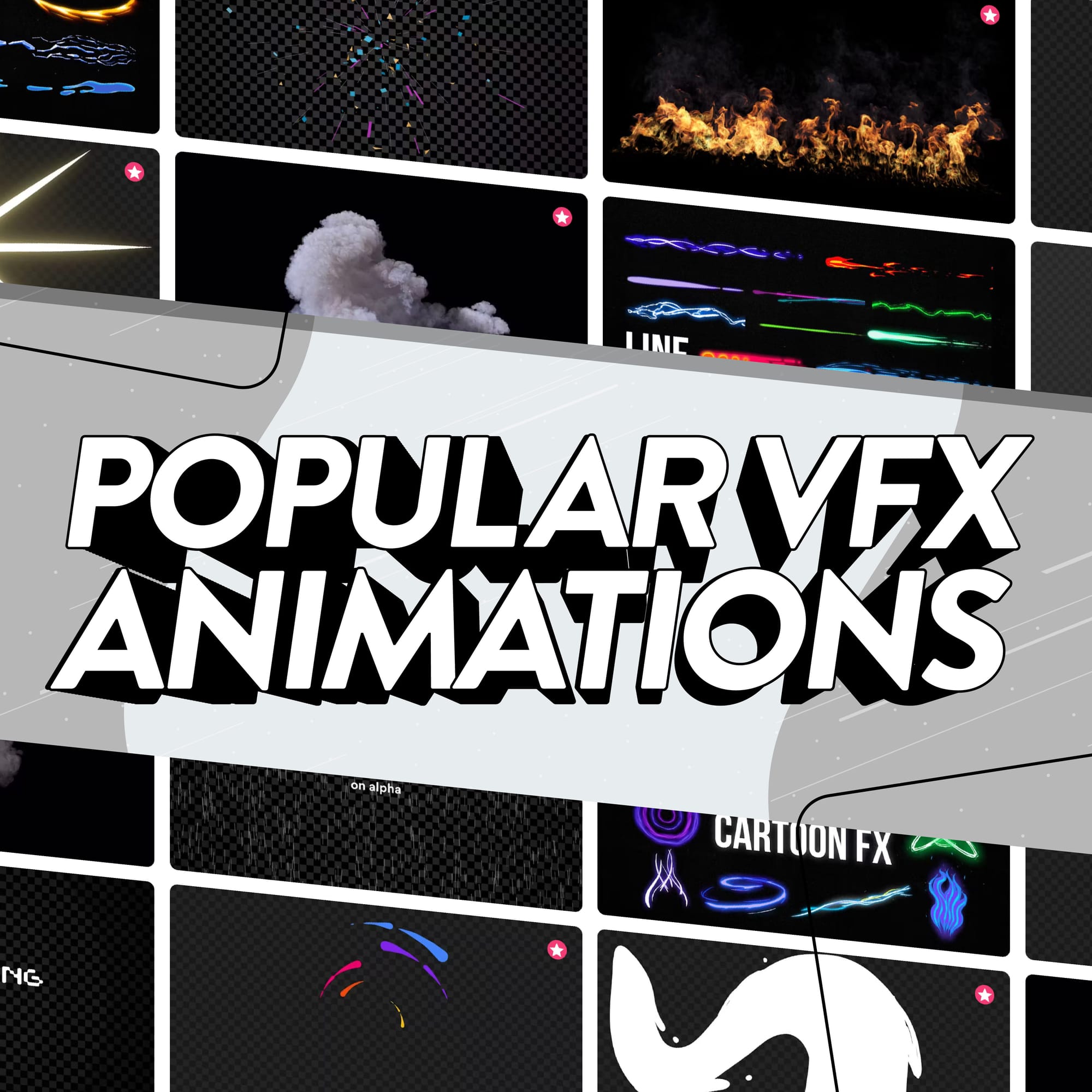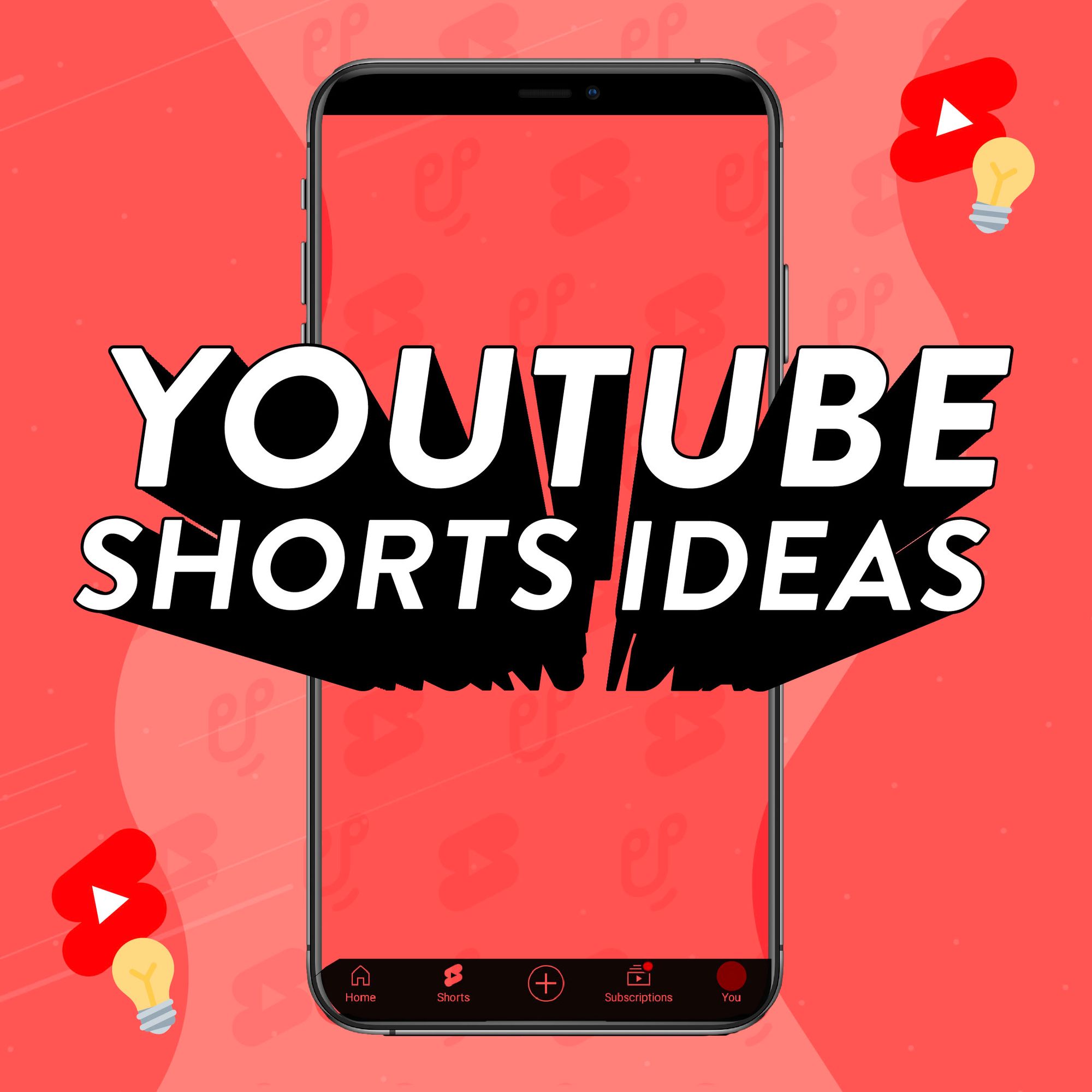Picking editing software is one of the most important decisions you’ll make as a content creator. After all, it’s a choice that could save you tons of time and result in better videos. There are options to suit every budget, so what is the best video editing software for you?
It goes without saying that you’ll want something that’ll produce quality content, but there are other aspects to consider too. Do you want something that makes editing simple or a tool that gives you greater control? You might want to consider mobile apps for edits on the fly, or prefer desktop software for longer content.
With so many options available, we’re here to help you choose the best video editing software for your needs. We take a look at the top tools for creators - from beginner-friendly software to professional-grade programs, mobile apps for social media, and free options to get you started.
- What to look for in video editing software
- 4 tips to help you choose the perfect video editing software
- Video editing software for beginners
- Professional standard video editing software
- Video editing software for social media content
- Best software for advanced effects and motion graphics
- Free video editing software
What to look out for when choosing video editing software
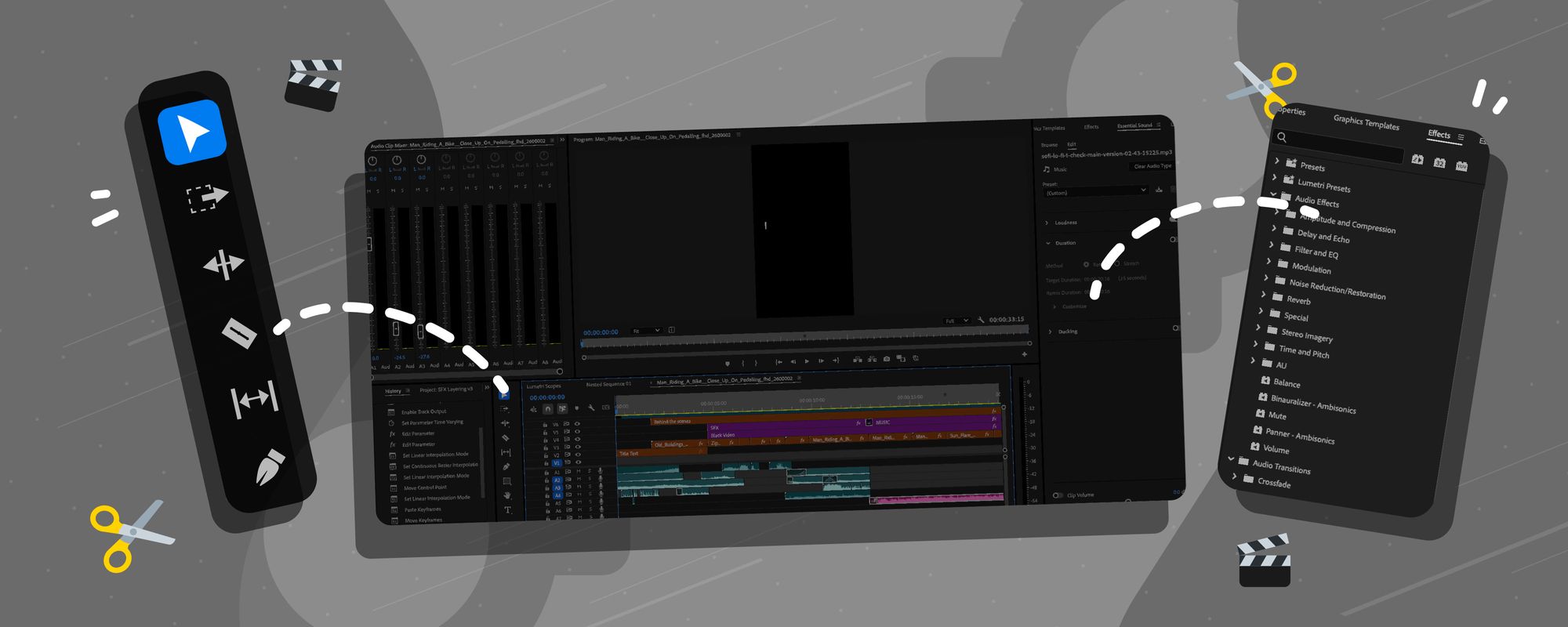
Instead of simply picking a video editing software and seeing how it goes, it pays to do your research. You’re going to be using these tools a lot, so consider what features and tools are important to your creative process. To give you the better idea of how to compare what’s available, here are some essential features to consider:
Ease of use:
If you’re just starting out, a simple and intuitive interface is a must. Some software like CapCut or Davinci Resolve offer drag-and-drop functionality that makes cutting and joining clips a breeze. You’ll find handy YouTube tutorials for the tools in our list below which give you an idea of how easy (or otherwise) they are.
Editing tools:
Pretty much all editing software will offer essential tools like cutting, trimming, adding layers, and adjusting speed to create polished content. But you might be looking for a little more control over your edits. Keep an eye out for the more advanced features like motion tracking and speech-to-text tools if these are going to be important to you. You’re likely to find powerful tools in the more professional options like Adobe Premiere Pro or Final Cut Pro.
Special effects and filters:
Editing software often comes with built-in filters, color grading tools, and effects. These can elevate your content, helping you create a unique look and feel that makes it stand out against other videos. For instance, CapCut features a lot of the effects you’ll have come across on TikTok. If there are particular effects and filters you want to use in your content, keep an eye out for whether these tools have them.
Export options:
The editing software you choose needs to export in the right formats for your platform YouTube and TikTok require software that can export to a minimum of 1080p resolution. And for professional-standard content, you should aim for higher-resolution 4K exports.
Most video editing tools can export MP4 files, which are widely used across YouTube and TikTok. If you’re creating higher quality videos, you might also want to export MOV files, although these come with a larger file size to match.
Cost:
No doubt cost will play a big part in the software you choose. It’s important to consider what suits both your budget and your content goals. If you’re strapped for cash, many editing software options come with complimentary trials or free versions so you can test out whether they’re right for you before taking the plunge. Or, you can choose a Premium version if you want to unlock advanced features.
4 tips to help you choose your perfect video editing software

With so many options to pick from, knowing where to start your search for the right software can be daunting. Which is why we’ve put together these tips to help you find your perfect editing tool:
- Keep in mind the type of videos you want to create
Are you making quick social media clips, long YouTube videos, or professional projects? The software that works best for you depends on the type of content you create. For example, creating TikTok videos on the go will be easier on a mobile-friendly tool.
- Try out tools with free versions and trials
Many of the video editing software options shared below offer free trials. Take advantage and test out features before you commit to spending money. You might find that a free version does everything you need it to, which will save you heaps long term.
- Consider the hardware you have
Be aware that some software programs are made for specific devices. As well as considering if you’ll be editing on mobile or desktop, think about whether you’re using Windows or Apple, Android or iOS. Make sure your devices can handle the software you choose, especially if you’re using high-resolution footage and bulky files.
- Watch video tutorials to get a feel for different tools
YouTube and TikTok are a goldmine of reviews and tutorials for video editing software. They give you a sneak peek at how easy these tools are and the features each one has. Plus, once you decide to road test one of these editing suites, these free online tutorials make learning how to use the editing software even easier.
The best video editing software for beginners
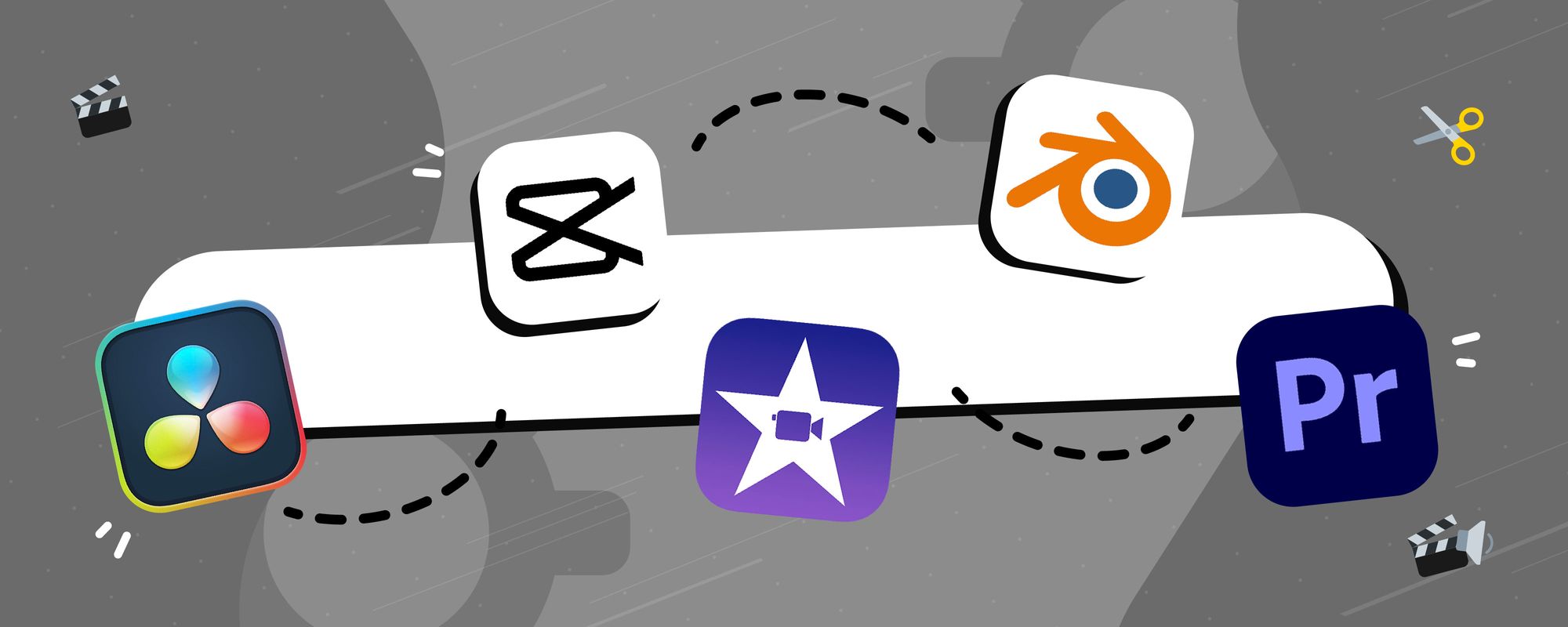
If you’re new to video editing, these user-friendly options can take you from complete novice, to having a full edited video in a matter of hours. They offer a simple introduction to the world of editing content and are all available for free.
iMovie (Mac only):
Best for: If you need an easy editor that comes free with your Mac, but don’t need lots of in-depth features.
Price: Free
Key features: Intuitive timeline, one-click themes, built-in music, and seamless Apple integration.
Pros: Has a simple interface, is great for quick edits and makes mobile-to-desktop syncing easy.
Cons: Comes with limited advanced features and is only available on Apple devices.
DaVinci Resolve:
Best for: Beginners who want free software with tons of features and don’t mind investing in the time to learn.
Price: Free; $295 for the even more feature-packed DaVinci Resolve Studio
Key Features: Comprehensive color grading, audio post-production, and multi-user collaboration.
Pros: You get professional-level tools in a free version, which is perfect for learning the ropes and developing your knowledge of video editing.
Cons: It has a steeper learning curve, although there are plenty of video tutorials available. It can be resource-heavy on older computers.
HitFilm:
Best for: Creators looking for free software that comes with lots of visual effects, but lacks the full functionality of other options.
Price: Free; The pro version starts at $349
Key Features: Advanced VFX with over 400 presets, and tons of online tutorials.
Pros: Has a fully functional free version with a library of visual effects you can add to your edits.
Cons: You’ll find watermarks on some features in the free version and it lacks a lot of the functionality of DaVinci Resolve.
The best professional-standard video editing software

We’ve rounded up industry-standard tools that reliably produce high-quality, professional content. These tools are packed full of advanced editing tools and effects, making them perfect if you want more control over your content. Such impressive pieces of kit can take months to master, but you’ll have high quality, unique edits as a result.
Adobe Premiere Pro:
Best for: When you want a professional-standard tool with high-performance features and don’t mind paying for it.
Price: $22.99/month on its own or $59.99 as part of the Creative Cloud package
Key Features: Multicam editing, powerful color grading, motion graphics integration.
Pros: Adobe’s industry-standard editor boasts extensive features, Creative Cloud integration, and is excellent for long-form projects.
Cons: The impressive suite of tools comes with a hefty price tag, and beginners might find it challenging to learn the ropes.
Final Cut Pro (Mac only):
Best for: Strict Mac users who want a speedy editor with streamlined features.
Price: $299.99 for a one-time purchase
Key Features: Magnetic timeline, advanced color grading, and impressive background rendering.
Pros: You’ll enjoy fast performance without paying pesky monthly fees. It’s great for 4K editing on Mac.
Cons: The obvious drawback is that it’s Mac-only, and it also has fewer third-party integrations than Adobe.
Avid Media Composer:
Price: $25.99/month (or $259.99/year)
Best for: Film and TV professionals with the hardware capable of running an in-depth editor.
Key Features: Multicam editing, frame-accurate trim, an extensive effects library.
Pros: Teams of editors can work on the same project at once, making it an industry-standard for complex projects.
Cons: Its greater complexity can make it challenging for beginners and you’ll need to make sure your hardware can run its powerful software.
Best video editing software for social media creators

The beauty of short-form content is that you can film videos on the fly. Platforms like TikTok and YouTube Shorts have mobile-friendly editing apps that allow you to turn quick footage into post-ready edits in minutes. They’re deliberately simple, which is great if you have zero editing experience!
CapCut:
Best for: TikTokers and short-form content creators who don’t need loads of features.
Price: Free
Key Features: Seamless TikTok integration, speed controls, tons of trending effects being updated all the time.
Pros: If you’re on TikTok, CapCut is fully integrated into the platform and has everything you need. You’ve got tons of effects and templates to choose from, all for free.
Cons: The fact it’s limited to mobile means it lacks advanced editing tools.
InShot:
Best for: Social media creators wanting a fast editor they can use on their phone.
Price: Free with in-app purchases; The Pro subscription is $3.99/month
Key Features: Cropping and background cutout, a library of text and stickers, transitions and effects.
Pros: This mobile app is super easy to use. With speedy export options, it's ideal for short form videos.
Cons: You’re limited to basic editing and there are watermarks in the free version.
Adobe Premiere Rush:
Best for: Creators willing to pay for more flexibility across mobile and desktop.
Price: $9.99/month or $59.99/month as part of the Adobe Creative Cloud package
Key Features: Drag-and-drop timeline, quick export, cloud syncing for easy cross-device editing.
Pros: Rush gives you streamlined editing and publishing to social platforms on the go, along with all the benefits of being integrated with Adobe.
Cons: It has fewer features than its stronger counterpart Premiere Pro and still requires a subscription.
Best software for advanced effects and motion graphics

Looking to add extra pizzazz to your edits with animations and effects? These programs allow you to unleash your creativity by making your own motion graphics and visual effects (VFX).
After Effects:
Best for: Creators who need complex motion graphics and VFX for their edits.
Price: $22.99/month on its own or $59.99 as part of the Creative Cloud package
Key Features: Advanced animation tools, visual effects, and motion tracking.
Pros: It’s widely regarded as the go-to software for motion graphics and VFX, and benefits from working seamlessly with Adobe Creative Cloud.
Cons: Its high learning curve means this isn’t one for beginners. It also requires strong computer specs.
Cinema 4D
Best for: Top-level designers, animators, and VFX artists looking for feature-packed software.
Price: $109.00 each month or $69.91/month billed annually
Key Features: Advanced 3D modeling, realistic rendering, motion tracking, simulation tools.
Pros: Its powerful, intuitive tools make Cinema 4D an industry-standard for 3D motion graphics, while still having a user-friendly interface.
Cons: With all that power comes a high cost and demanding hardware requirements. Beginners will also need time to master its features.
Blender:
Best for: Creators willing to commit time to creating their own 3D effects and animations.
Price: Free
Key Features: 3D modeling, rendering, and VFX tools.
Pros: Being open-source, you can enjoy the benefit of large community support if you get stuck, as well as having access to an incredibly comprehensive tool for free.
Cons: It does have a complex interface which makes for a steep learning curve for newcomers.
Motion (for Mac):
Best for: Apple users adding animations and effects to Final Cut Pro projects.
Price: $49.99 for a one-time purchase
Key Features: Cinematic 2D and 3D titles, large suite of effects, seamless Final Cut integration.
Pros: This is an affordable companion to Final Cut Pro that’ll give you more options for effects and animations.
Cons: It’s only available for Mac which means it lacks versatility outside the Apple ecosystem.
Best free video editing software options for creators on a budget

Don’t worry if you don’t have the budget to spend on editing software, free doesn’t mean you have to settle for less. Below are some of the best-performing editing suites available to content creators at any level.
DaVinci Resolve (Again):
Best for: Creators looking for free software packed full of advanced features used by professionals.
Price: Free; DaVinci Resolve Studio available for $295
Key Features: Comprehensive color grading, audio post-production, and multi-user collaboration.
Pros: You get professional-level tools in a free version, which is perfect for developing your knowledge of video editing.
Cons: Picking up its features might take time, although there are plenty of video tutorials available. It can be resource-heavy on older computers.
CapCut (Again):
Best for: Short form creators who want a quick and easy app to edit on-the-go.
Key Features: Seamless TikTok integration, speed controls, tons of trending effects being updated all the time
Pros: If you’re on TikTok, CapCut has everything you need and is fully integrated into the platform. You’ve got tons of effects and templates to choose from, all for free.
Cons: The fact it’s limited to mobile means it lacks advanced editing tools.
Shotcut:
Best for: Beginner and hobbyist editors who want a straightforward, easy editing tool.
Price: Free
Key Features: Support for a wide range of formats, timeline editing, and filters.
Pros: A straightforward open-source tool that’s powerful enough to handle most basic editing tasks. It’s free and comes without watermarks.
Cons: Its simplicity means it has a basic interface and fewer features for advanced projects.
Lightworks:
Best for: Beginners who want a solid free editor which they can upgrade with pro features over time.
Price: Free; Pro version starts at $24.99/month
Key Features: Real-time effects, built-in titling, and export options up to 4K.
Pros: Boasts a strong free version with motion graphics and social media templates.
Cons: Does have limited export formats in the free version and might be complex for total beginners.
Up your content game with the right video editing software

The best video editing software depends on what you need it for, your experience, and obviously your budget too. But whichever tool you choose, remember that learning the software is just as important as picking the right one.
Beginners can dive straight in with user-friendly options like iMovie or DaVinci Resolve that allow them to learn the ropes. More experienced creators might look to invest in Adobe Premiere Pro or Final Cut Pro to take advantage of their more in-depth capabilities. TikTokers and social media creators are likely to gravitate toward CapCut or InShot for their ability to edit videos on the go.
Explore what’s going to work best for you. And keep in mind that no matter how good your video editing software is, it won’t be able to save badly captured footage. Make sure you’ve got all the gear you need for filming quality content by heading to our video equipment checklist.
Get kitted out with the essential gear for creators
Want to dig deeper into the gear that's right for your? Check out our related guides to the best equipment for content creators:
- Best YouTube Equipment for Beginners
- The Best Microphones for YouTube Videos
- The 8 Best Video Cameras for YouTube
- The Best Video Editing Software: From Beginner to Pro
- Free YouTube Tools: Must-Have Tools to Increase Views and Grow Your Channel
- The Best Free Music Websites for Creators to Safely Download Tracks
- The Best Free Sound Effects Websites for Creators

